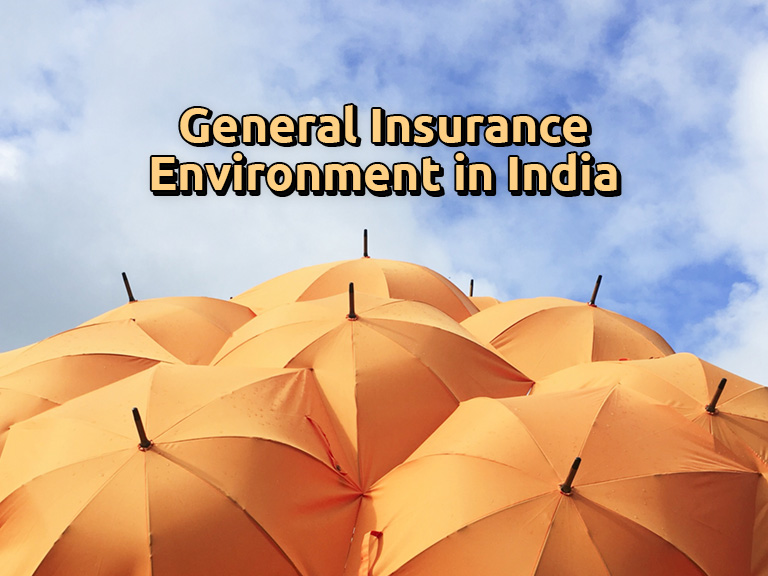The story of General Insurance environment in India, in its more than a century of recorded existence in India, has passed through a fascinating journey, veering drastically from one end of the spectrum to another. Starting with private companies to nationalization to again allowing of private companies to exist & compete with public sector companies, the insurance environment in India has been through a lots of ups and downs. Let me walk you through this interesting journey.
Evolution and History:
It is often said that insurance in some form or the other existed even in the period prior to recorded history. The Indian experience with Insurance too is as old as the human history. Concept of well-being & prosperity of people find references in Rigveda. References to insurance are found in Manusmriti, Dharamshastra & Arthashastra. There are references to pooling of resources and their re-distribution in times of national calamities.
Modern Era:
Coming to the modern era, the concept of insurance, as we are familiar with today, began with Lloyd’s of London, who were dealing with Marine Insurance, towards the end of 17th century. Around that time, the other forms of Fire, Accident and Life insurance too developed.
In India, the agents of European companies started functioning in early 19th century. The first company that was formed here was Oriental Life Insurance Company which was started in 1818 in Calcutta by the Europeans. Bombay Mutual Life Assurance Society was the first Indian company which was formed in 1870.
Legislation: A movement from totally deregulated market to totally regulated market
The Life Insurance Act was passed in 1912. With great expansion of business and formation of large number of companies, the legislation was amended with enactment of Insurance Act, 1938. The life insurance business was nationalised with passage of Life Insurance Corporation Act, 1956 and Life Insurance Corporation of India was formed after merger of 245 life insurers operating in the country at that time. This was followed up by passage of General Insurance Business (Nationalisation) Act, 1972 vide which 106 general insurers were merged into four groups and four Public Sector General Insurance Companies (National Insurance Co. Ltd., The New India Assurance Co. Ltd., The Oriental Insurance Co. Ltd. & United India Ins. Co. Ltd. with headquarters in the four metropolitan cities) were formed as subsidiaries of General Insurance Corporation of India (GIC). The sector was thus brought from earlier totally deregulated market into a totally regulated market. This continued till late nineties when the Insurance Regulatory and Development Authority Act, 1999 was passed, opening up the sector to private players. Simultaneously the four PSGICs were made independent entities and GIC was made a national re-insurer. The role of regulation of market that was with Controller of Insurance was passed on to Insurance Regulatory and Development Authority of India (IRDAI) which is now the regulating authority for the insurance sector.
Current Scenario:
After entry of private operators was allowed with permission of FDI with a cap of 26%, many operators entered the field with tie ups with foreign insurance companies. The cap was later on enhanced to 49%. At present apart from the LIC & the four PSGICs, 23 private Life Insurance Companies and 21 General Insurance Companies are in operation. In addition to these, there are also seven Health Insurance Companies and two specialised insurers viz. The Agricultural Insurance Co. of India & ECGC (Export Credit Guarantee Corporation) Ltd. The re-insurance market too has been opened up for private players and apart from the existing GIC Re, nine other foreign re-insurers (including Lloyd’s) have opened branches/offices in India for re-insurance business operations.
Other Changes:
The way the insurance business is conducted is seeing very fast changes in recent times. Whereas earlier the business that was through personal contacts, procured through agents and field officers, now there is multiplicity of intermediaries and business is procured through brokers, web aggregators, Insurance Marketing Firms (IMFs), Insurance Self-Network Platforms (ISNPs) and other ‘Point of Sales Persons’ (POS). Concept of Agent has expanded to Corporate Agent. With enhancement of communications / technology, the telemarketers for insurance have come into existence. There are also insurance tie-ups of insurers with vehicle manufacturers. Banks also tie-up with insurers for ‘Bancassurance’. The servicing of claims too has undergone substantive changes. From the earlier practice of getting losses assessed through surveyors, now Third Party Administrators actively assist in claim settlements in Health portfolio.
IRDAI is also encouraging new project experiments by bringing in regulatory ‘sandbox’ environment where insurers are encouraged to design and launch new and innovative products.
Insurance environment in India is continually evolving. IRDAI is attempting to fulfil its commitment of regulating as well as development of insurance business of India. As per IRDAI, in the previous year, the total insurance premium in India increased by 9.3% (after adjusting inflation) whereas the global total increase in premium was 1.5%, even after discounting the larger global base, it is still an indicator that the road ahead may be long and arduous but is definitely filled with immense opportunity.


